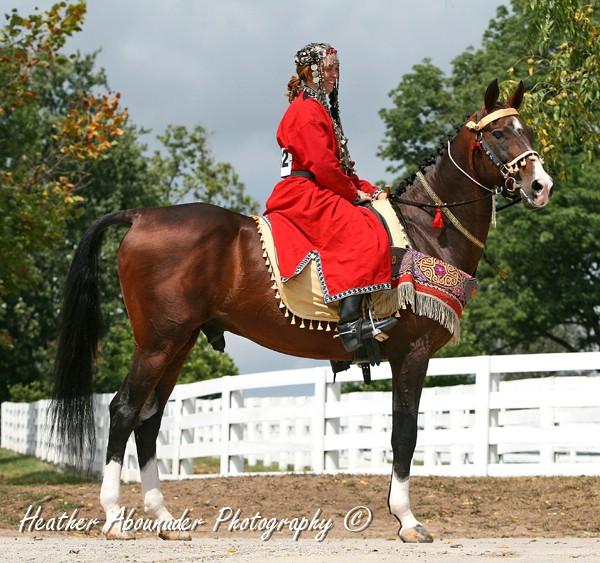
Continent: Asia
Country: Turkmenistan
Weight: 452 – 465 kg
Height: 155 – 163 cm
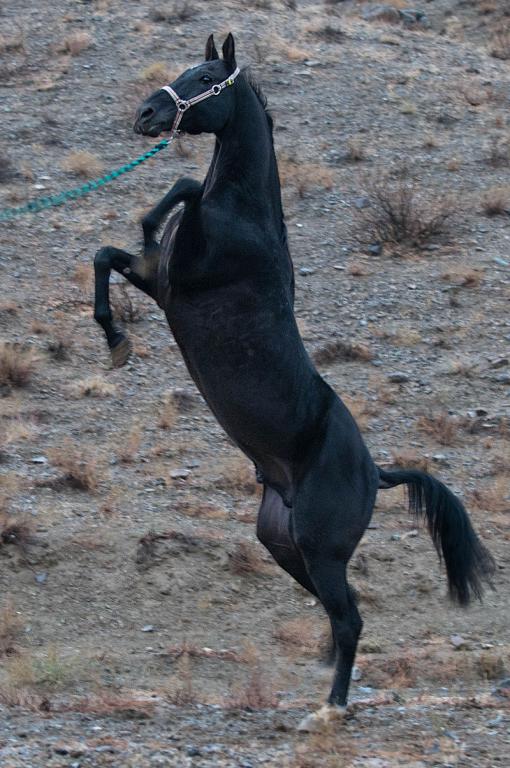
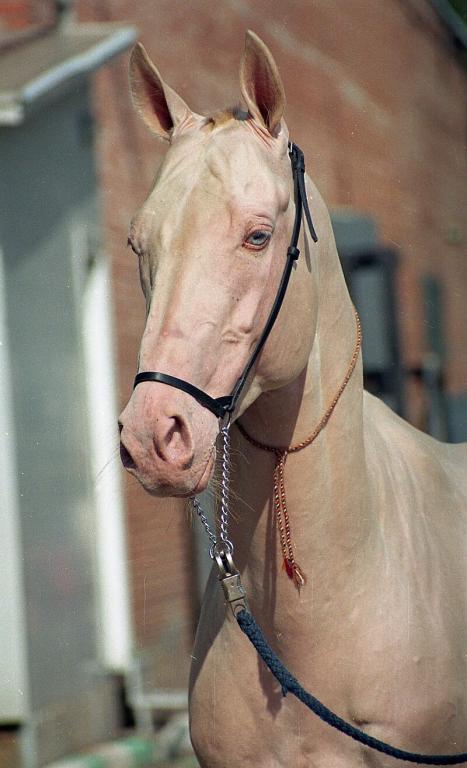
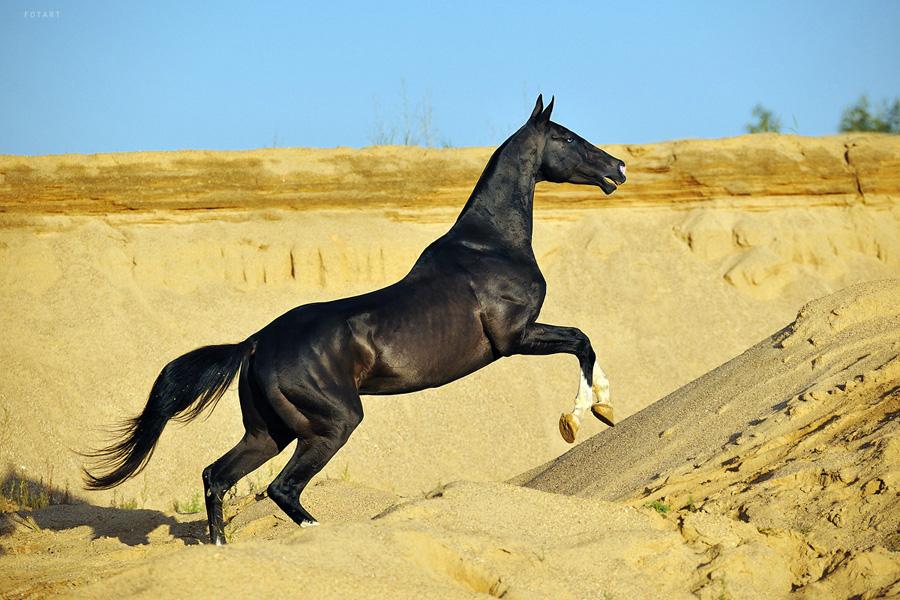
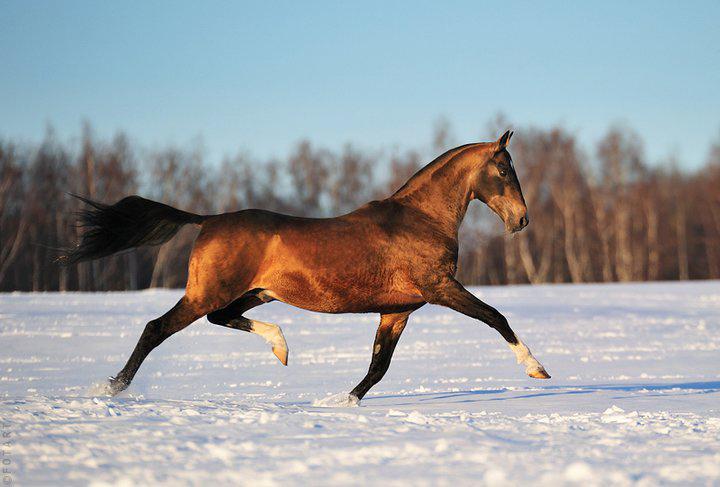
Country of origin: Turkmenistan, also historically present in northern Iran, southern Kazakhstan, Russia, and Uzbekistan.
The Akhal‑Teke gets its name from the Ahal valley and the Teke tribe, one of the main ethnic groups of the Turkmen people. This horse is a national symbol of Turkmenistan and holds a central place in its culture, traditions, and identity.
Similar horses have existed since Antiquity in the region, making the Akhal‑Teke one of the oldest surviving riding horse breeds. Some researchers even associate it with the horses of the Scythians and Parthians, famed for their swift and mobile cavalry.
The Akhal-Teke horse is traditionally bred in the Ahal region, in southern Turkmenistan, where extreme climatic conditions — heat, drought, and arid terrain — have shaped its legendary hardiness and endurance. Breeding there still relies on ancestral methods, combining freedom in the desert with rigorous selection by Turkmen breeders.
Today, although breeding programs exist abroad, notably in Russia and Europe, the Ahal region remains the historical and symbolic heart of the breed, where the purest bloodlines are preserved.
The Akhal‑Teke plays a major role in equine genetic history as one of the oldest known pure breeds, with origins dating back over 3,000 years. Its well-preserved lineage has influenced many other Eastern and European breeds, including the English Thoroughbred and the Arabian. Due to its fine build, exceptional endurance, and efficient metabolism, it has served as a base in breeding programs aiming to improve speed, stamina, and refinement in sport and racehorses.
Regarded as one of the world’s oldest horse breeds, the Akhal‑Teke originated over 3,000 years ago in Central Asia. Raised by Turkmen nomadic tribes, especially the Teke, it descends from ancient war and travel horses used across the region’s deserts. The breed’s name comes from the Akhal region near the Kopet Dag mountains and the Teke tribe, known for equestrian expertise.
During the Soviet era, the breed was standardized, and the stud book was officially closed in 1932 to maintain purity.
Known for its spirited, intelligent, and sensitive temperament – the result of centuries of selection in harsh desert conditions. Highly attuned to its environment, it often bonds closely with a single rider, described as a "one-person horse" capable of forming deep, exclusive trust.
This loyalty makes it an exceptional partner, but only with respectful and gentle handling. Harsh or inconsistent training can lead to distrust or reactiveness. It learns quickly thanks to its intelligence but may show independence or stubbornness if misunderstood. This strong personality, often called “a cat in a horse’s body,” requires a calm, patient, and experienced rider.
The Akhal‑Teke is attracting increasing international interest thanks to its unique appearance, metallic sheen, and underexplored sporting potential. Though still a niche breed outside its homeland, breeding programs are emerging in Europe, North America, and Russia, led by enthusiasts seeking to preserve bloodline purity. Interest in its endurance, dressage, and show abilities is growing.
However, the breed’s small gene pool, inbreeding, and genetic isolation pose serious challenges. International collaboration and awareness of its heritage value are crucial for its long-term preservation and recognition.
Generally regarded as robust and enduring, well-suited to extreme climates like heat and aridity – a trait from centuries of desert selection.
However, it also has certain specific vulnerabilities. A limited genetic pool has led to inbreeding cases and increased risk of hereditary issues. Some individuals have thin, sensitive skin prone to irritation or poor healing. Stress sensitivity is also noted, sometimes causing weight loss or digestive issues in unsuitable environments. A rare form of congenital ataxia (neurological instability) has been documented in a few lines, though it remains exceptional.
The Akhal‑Teke displays unique, supple, elastic, and silent gaits, shaped by its selection in Turkmenistan’s arid plains. Its walk is long and steady, the trot smooth with natural elevation, and the canter – often described as “flowing” – appears like a glide. This fluidity gives the impression it touches the ground without sound. While its gaits may not seem spectacular, they are energy-efficient, making it an exceptional endurance horse.
Born on 01/01/1952
- Individual gold medal in dressage at the 1960 Rome Olympics; diplomas in Tokyo 1964 and Mexico 1968
- Influential sire after his sport career, father of over 60 foals, several successful in dressage
- Still honored as one of the USSR’s most famous horses, with a statue in his name
Born on 01/01/1991
- World Champion of the breed in 1999, depicted on the national emblem, stamps, and other Turkmen symbols
Born on 01/01/1987
-Stallion born in 1987, gifted by President Niyazov to French President François Mitterrand in 1993
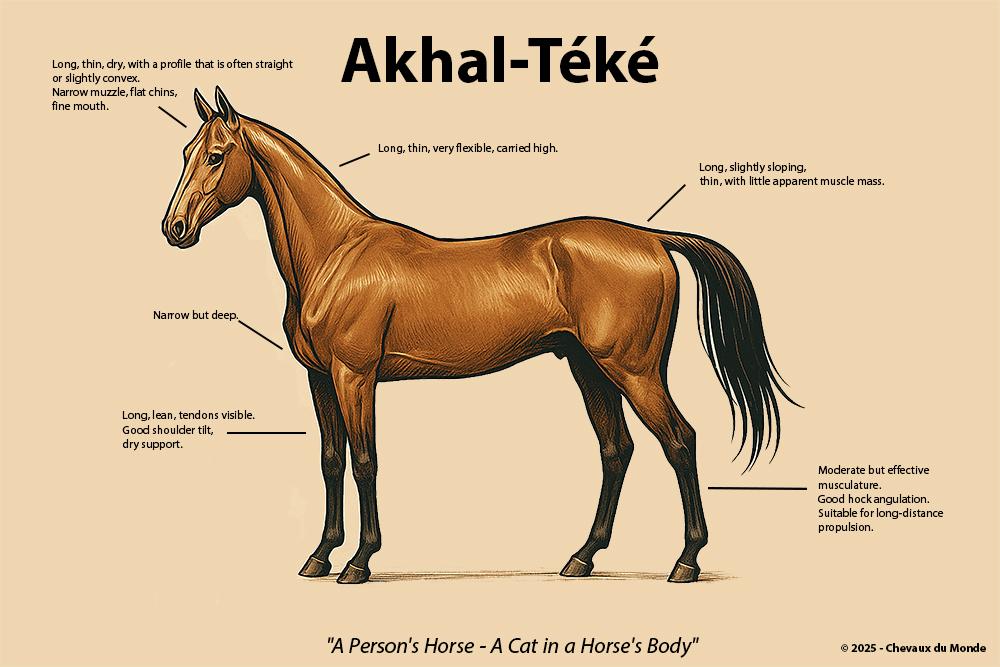
Akhal-Teke - Morphology - Standard of the breed

Join us for the fascinating history and heritage of an endangered breed, the Akhal-Teke from Turkmenistan. An athletic and versatile breed as you will see, the horse is also known for the metallic sheen to it's coat, and you'll discover how that was developed by early breeders and owners.